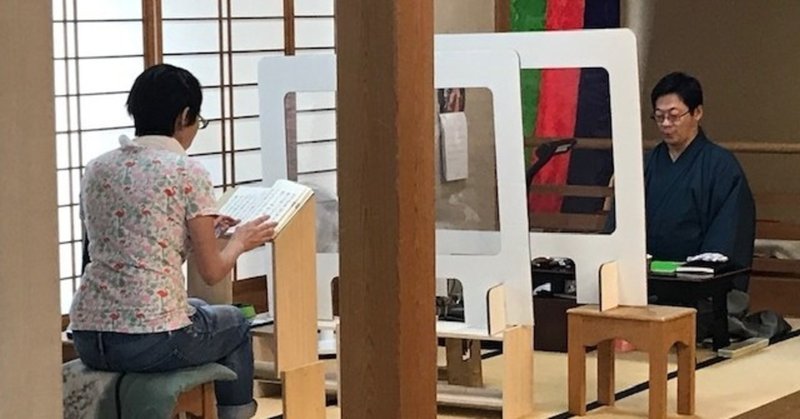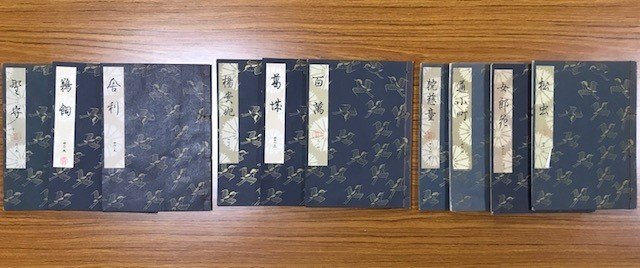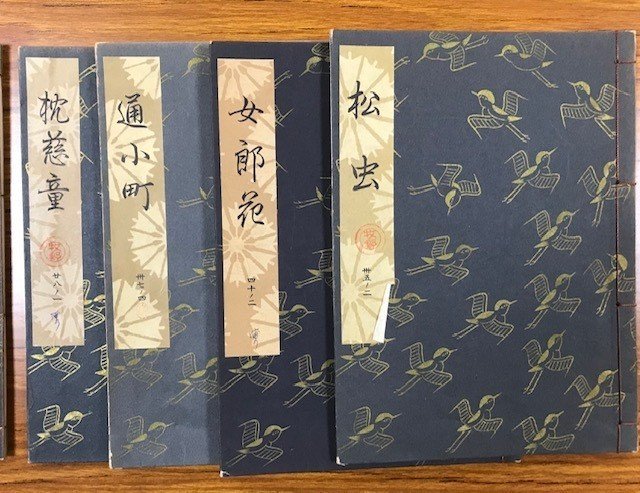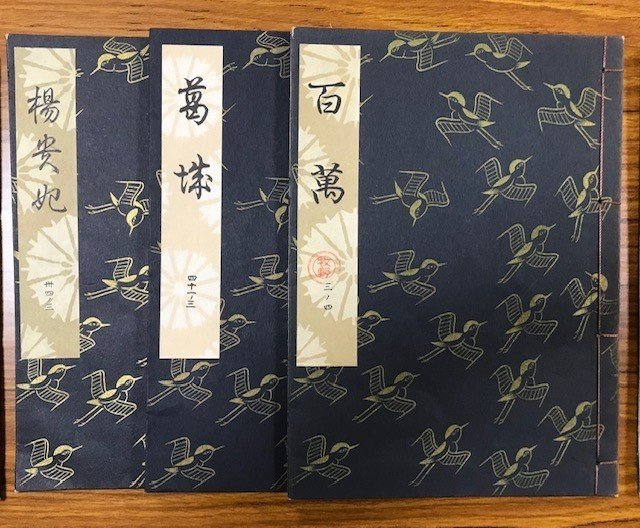
謡本も、当時の形体のままで継承されている。 The utai book is also inherited in its original form.
能楽は、舞・謡・囃子の三要素から成り立っている古典芸能である。いま風に言うなら、舞は演技・ダンス、謡はセリフ、囃子は伴奏・効果音ということになろう。いまの時代に合わせ分かりやすく表現すると、能楽関係者から、それは「違う」とお叱りをいただくかもしれない。舞は「舞」、謡は「謡」、囃子は「囃子」という言葉も財産として継承されているものの一つと言われるだろうが・・・。
Noh is a classical performing art that consists of three elements: dance, utai, and hayashi. In modern terms, dance is acting / dancing, utai is dialogue, and hayashi is accompaniment / sound effects. If you express it in an easy-to-understand manner according to the current era, you may be scolded by Noh people as "not". It may be said that the words "Mai" for Mai, "Utai" for Utai, and "Hayashi" for Hayashi are also inherited as assets.

その中で「謡」は、能の声楽にあたる部分で、演じるストーリーの台本ということになる。謡は登場人物の台詞と地謡(じうたい)とよばれるバックコーラス部分を含めた、能において言語で表現される部分の総称といえる。能の場合にはこれに特殊な台詞回しや節が付けられている。それにより能独特の雰囲気がつくられる。
Among them, "Utai" is the part that corresponds to the vocal music of Noh, and is the script of the story to be performed. Utai is a general term for the parts of Noh that are expressed in language, including the dialogue of the characters and the backing chorus part called Jiutai. In the case of Noh, special dialogues and clauses are attached to this. This creates a unique atmosphere of Noh.
演能の時だけではなく、囃子なしで単独でうたうのを素謡(すうたい)という。いまはそれだけを稽古されている方たちも多いと聞く。声をお腹から出す、この練習が健康に良いというのが理由のようである。
Singing without a musical accompaniment is called "sutai", not only during performances. I hear that there are many people who are practicing only that now. It seems that the reason is that this practice of making a voice out of the stomach is good for your health.


写真にあるのが観世流に継承されている謡本の種類の一つである。見てのとおり、いまでも特漉(とくすき)半紙判の伝統的和綴製本で表紙が金千鳥である。各曲に作者をはじめ構想、資材、曲趣、解説、装束、そして演出等々が記されている。この謡本にしても、昔からの形体を崩さず受け継がれている。
The photo shows one of the types of utai books inherited by the Kanze school. As you can see, it is still a traditional Japanese-style binding of Tokusuki calligraphy with a zigzag cover. Each song describes the author, concept, materials, song taste, commentary, costume, and direction. Even in this chant, it has been inherited without breaking its old form.
レポート & 写真 / 渡邉雄二 トップの写真はコロナ対策をしながらの謡稽古
Reported & Photos by Yuji Watanabe
Top Photo / Lesson
よろしければサポートお願いします。日本の伝統文化に関心を寄せています。若いころに文化圏の異なる地域の方たちとの交流で日本のことをあまりにも知らなかったことに気づかされ、それがきっかけで広く浅く学んでいます。拙いレポートですが、お目に留めていただければ幸です。
